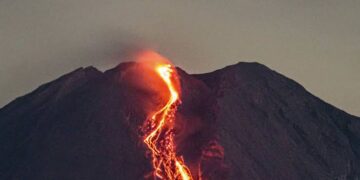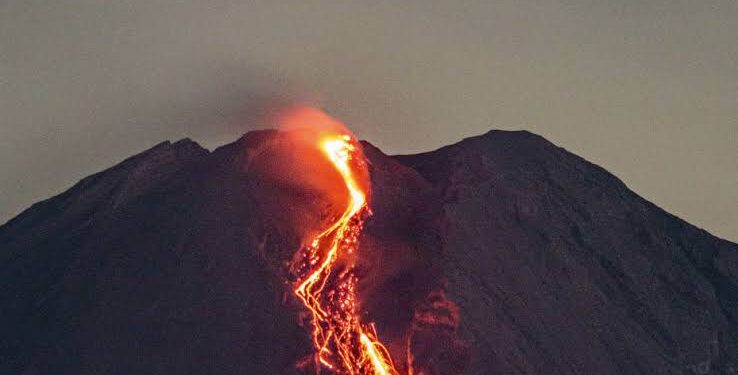By Ebi Kesiena
Rescuers in Indonesia raced to find survivors in villages blanketed by molten ash on Sunday, after the eruption of Mount Semeru killed at least 13 people and left dozens injured, officials said.
The eruption of the biggest mountain on the island of Java caught locals by surprise on Saturday, sending thousands fleeing and forcing hundreds of families into makeshift shelters.
At least 11 villages of Lumajang district in East Java were coated in volcanic ash, submerging houses and vehicles, smothering livestock and leaving at least 900 evacuees seeking shelter in mosques, schools and village halls.
A resident of Kampung Renteng, a village of about 3,000 people, stated that they did not know it was hot mud, all of a sudden, the sky turned dark as rains and hot smoke came.
Dramatic footage showed Semeru pumping a mushroom of ash into the sky, looming over screaming residents of a nearby village as they fled.
“The death toll is now 13 people. Rescuers found more bodies,” National Disaster Mitigation Agency spokesman Abdul Muhari told AFP, without specifying the cause of death.
Two of the victims have been identified, he said in a later statement.
At least 57 people including two pregnant women were injured in the eruption, of whom 41 suffered burns and were hospitalised, the agency said in a press release.
President Joko Widodo on Sunday ordered a rapid emergency response to find victims after the scale of the disaster became clear, said state secretary Pratikno, who like many Indonesians goes by only one name.
As many as 10 trapped people were rescued from areas surrounding Lumajang, according to Muhari, as villagers and rescuers worked through the night to find anyone trapped or retrieve bodies.
Local broadcaster Kompas TV reported that those rescued were local workers at a sand mining site.
But the rescue efforts have been hindered by hot ash and debris with evacuations temporarily suspended on Sunday due to hot ash clouds, Indonesia’s Metro TV reported, highlighting the difficulty of the rescue operation.
There is also a risk of heavy rain causing ash sediment to form a new river of hot lava, the country’s top volcanologist Surono told the station.
Most of those burnt in the immediate aftermath misunderstood the hot mud flow for floods so had stayed in their villages, Lumajang Public Order Agency spokesman Adi Hendro told AFP.
“They did not have time to run away,” he said.
At least seven people remain missing after the eruption, Hendro said, including two who authorities believe are still alive.
“There were signs they are still alive as there were lights maybe from their cellphones.
“But we cannot go there as the ground is still very hot,” he said.


































